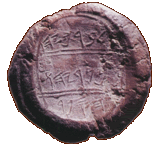The Samuel or The Psalm?
While reading 2 Samuel, it came to me that what I was reading sounded strangely familiar. As I went digging, lo and behold, a psalm came to light virtually identical to the section I was reading. Here is a brief excerpt from the duplicate passages:
And David spoke unto the LORD the words of this song in the day that the LORD delivered him out of the hand of all his enemies, and out of the hand of Saul; and he said: The LORD is my rock, and my fortress, and my deliverer; The God who is my rock, in Him I take refuge; my shield, and my horn of salvation, my high tower, and my refuge; my saviour, Thou savest me from violence.While the two seem virtually identical, there are discrepancies that become more apparent in the Hebrew. Unlike Yeshua, who was an itinerant prophet and said the same thing many different times in slightly different ways, if David actually spoke this, he would not have spoken both versions. One has obviously borrowed from the other. So I leave you for 2006 with my own quandary: which came first, 2 Samuel 22 or Psalm 18?
--2 Samuel 22:1-3, JPS
For the Leader. A Psalm of David the servant of the LORD, who spoke unto the LORD the words of this song in the day that the LORD delivered him from the hand of all his enemies, and from the hand of Saul; And he said: I love thee, O LORD, my strength. The LORD is my rock, and my fortress, and my deliverer; my God, my rock, in Him I take refuge; my shield, and my horn of salvation, my high tower.
--Psalm 18:1-3, JPS

